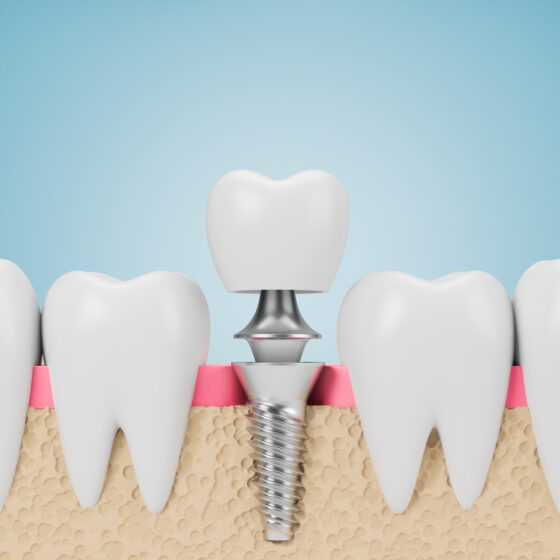Dental implants have revolutionised the field of dentistry, providing a long-term solution for missing teeth and restoring both functionality and aesthetics. This comprehensive guide will delve into the history of dental implants, explore their current state of the art, and speculate on the exciting future developments in this rapidly evolving field.
I. Historical Evolution of Dental Implants:
A. Ancient Attempts:
Archaeological evidence suggests that ancient civilisations, including the Mayans and Egyptians, experimented with tooth replacements using materials like shells and carved stones.
Limited success and high failure rates were common due to a lack of understanding of bone integration.
B. Periosteal and Subperiosteal Implants:
In the early 20th century, periosteal and subperiosteal implants were introduced, placing metal frameworks on the bone’s surface.
These early attempts faced challenges such as discomfort and complications, limiting their success.
C. Discovery of Osseointegration:
Dr. Per-Ingvar Brånemark’s groundbreaking work in the 1950s introduced the concept of osseointegration – the direct structural and functional connection between living bone and the implant.
Titanium emerged as the ideal material due to its biocompatibility and ability to fuse with bone tissue.
D. Modern Implant Techniques:
Advances in imaging technology, computer-assisted design (CAD), and 3D printing have improved the precision of implant placement.
The advent of endosseous implants, such as root-form implants, has become the standard in modern implantology.
II. Current State of Dental Implants:
A. Materials and Design:
Titanium remains the primary material for dental implants, with ongoing research exploring alternative materials.
Innovations in implant design, including surface modifications and nanotechnology, enhance osseointegration and long-term success rates.
B. Digital Dentistry:
Computer-aided design and computer-aided manufacturing (CAD/CAM) technologies enable accurate planning and custom fabrication of implant components.
Digital impressions, cone-beam computed tomography (CBCT), and virtual implant placement have improved treatment outcomes, increasing the entrepreneurial opportunities of dentists.
C. Immediate Loading:
Advances in implant techniques allow for immediate loading, reducing treatment time and improving patient satisfaction.
Comprehensive case selection and diagnostic criteria are crucial for successful immediate loading protocols.
D. Complications and Solutions:
Despite high success rates, complications like peri-implantitis and implant failure can occur.
Ongoing research focuses on preventive measures, early detection, and innovative treatments to address complications.
Reader Question: What happens during my dental implant procedure?
Your dental implant treatment procedure may be done by a:
– general dentist
– periodontist
– oral surgeon
They will develop a treatment plan.
A dental implant procedure is usually done in stages over a few months.
First you will need to have scans and x-rays to give your dentist or dental practitioner a clear picture of where to place the implant.
Your dentist or dental practitioner will put the dental implant into your jawbone in a minor operation. They will give you a local anaesthetic so that you don’t feel pain during the surgery.
Over about 3 months your bone grows around the implant, which helps to hold it in place.
Whilst the implant site is healing, your artificial tooth (crown) is made in a laboratory.
The crown is fixed to the metal implant to fill the gap in your teeth.
Dental implants can also be used to hold a dental bridge or dentures.
III. Future Trends and Innovations:
A. Biomaterial Advancements:
Exploration of new biomaterials, such as ceramics and biopolymers, to improve biocompatibility and reduce the risk of adverse reactions.
Nanotechnology applications for surface modifications to enhance implant stability and reduce bacterial adhesion.
B. Regenerative Therapies:
Emerging regenerative approaches using growth factors, stem cells, and tissue engineering to enhance bone and soft tissue regeneration around implants.
Bioactive coatings promoting tissue integration and angiogenesis for improved healing.
C. Artificial Intelligence (AI) in Implantology:
AI-driven diagnostics for treatment planning, risk assessment, and predicting long-term outcomes.
Virtual reality (VR) and augmented reality (AR) applications for immersive surgical training and planning.
D. 3D Bioprinting:
Exploration of 3D bioprinting technology to create personalised, living tissue constructs for implantation.
Potential for on-site printing of custom implants, reducing the need for off-the-shelf solutions.
E. Smart Implants:
Integration of sensors and microelectronics within implants for real-time monitoring of biomechanical forces, temperature, and pH levels.
Smart implants could provide early detection of complications and enable personalised treatment adjustments.
In the smart implant sphere the integration of orthodontics with innovations such as All on 4 is also being researched and experimented with.
The Future is Shiny
Dental implants have come a long way from ancient attempts at tooth replacements to the sophisticated, digitally-driven procedures of today. The history, current state, and future trends of dental implants showcase a remarkable evolution that continues to redefine the possibilities in restorative dentistry. As research and technology advance, the future of dental implants holds exciting prospects, promising even more effective, personalized, and innovative solutions for patients with missing teeth.
